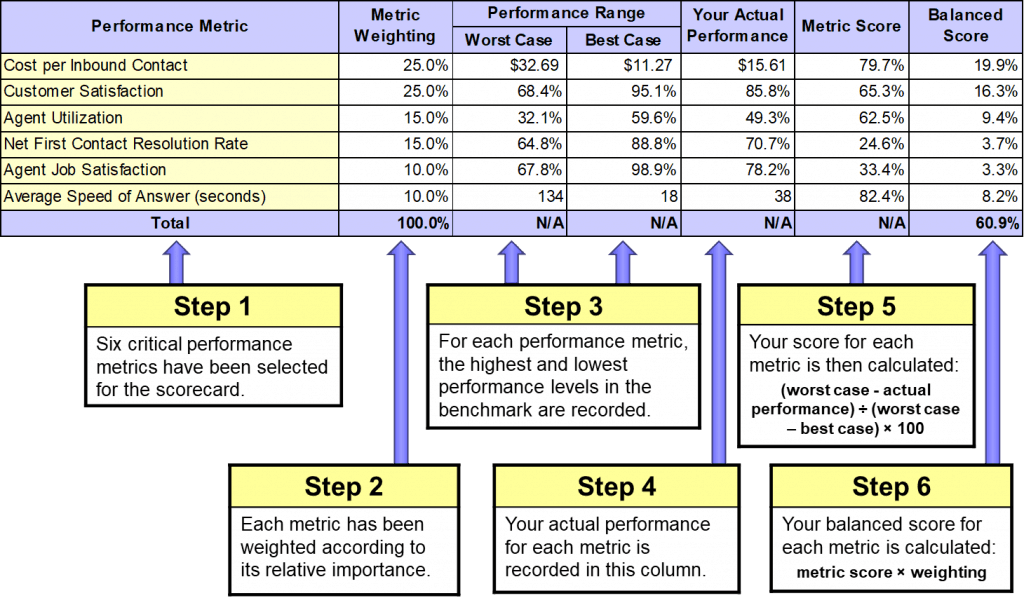
by Jeff Rumburg, Managing Partner at MetricNet

Benchmarking is a proven, mature methodology for measuring the efficiency and effectiveness of the Service Desk, and adopting industry best practices. Effective benchmarking enables a service desk to quantify its performance, objectively compare itself to industry averages and best practices, identify performance gaps, and define the steps necessary to close the gaps and maximize customer satisfaction.
Although benchmarking is a rigorous analytical discipline, the benchmarking process is relatively straightforward. There are seven major steps in the benchmarking process, including:
1. Determine the Scope of your Benchmarking Initiative – Will you be benchmarking IT Service and Support as a whole or the Service Desk alone? Many organizations prefer to benchmark both the service desk and desktop support to ensure the benchmark provides a 360-degree view of IT Service and Support performance.
2. Identify which Channels to Benchmark and Compare – It’s not uncommon to include channel specific metrics in a Service Desk Benchmark. Historically, Service Desk metrics have fallen into six major categories as illustrated in Figure 1 below. However, with the growing trend of omni-channel support, new channel specific metrics have made an appearance. For example, Cost per Contact and Customer Satisfaction can now be broken down by contacts originating in chat, web, email and walk-up channels.
Figure 1: Some Common Service Desk KPIs
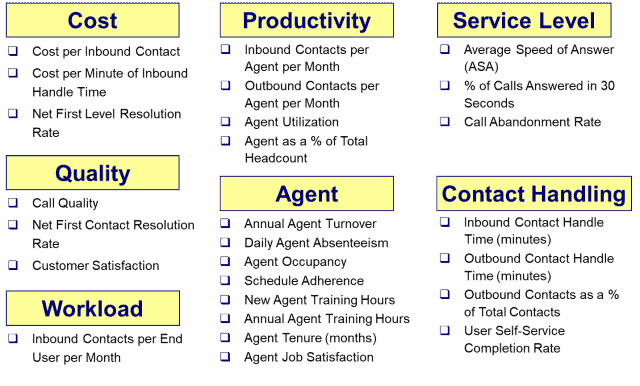
Although not a comprehensive listing, these are some of the key metrics that should be included in any Service Desk benchmark.
3. Interviews – Speaking with a representative cross-section of Service Desk personnel – including agents, supervisors/team leads, managers, workforce schedulers, trainers, and QA/QC personnel – provides valuable context for the benchmark. These interviews enable more accurate interpretation of the quantitative data and a better understanding of your organization’s unique culture and organizational dynamics.
4. Benchmarking Peer Group Selection – Peer group selection is one of the most important success factors in benchmarking. To ensure a fair, apples-to-apples comparison of benchmarking data, the organizations in your peer group must look like you across the following four dimensions:
· Scope – The types of services you offer through the service desk.
· Scale – The volume of contacts you handle because the service desk is a scale sensitive function.
· Complexity – A rough proxy for complexity is your handle time per contact.
· Geography – We wouldn’t compare a North American Service Desk against other service desks in India for example where the wage rates are much lower because this is a labor-intensive function. Put another way, a significant portion of the service desk’s operating cost is driven by the wage rates of the agents that work in your service desk.
Additionally, one of the perennial problems in benchmarking is finding a comparable peer group large enough to produce a meaningful benchmark. Given the magnitude of MetricNet’s benchmarking database, SDI and MetricNet expect to produce between 20 and 35 comparable service desks for each benchmarking peer group.
5. Data Collection – Statistically valid benchmarks are built on a standardized data collection process that produces consistent and accurate data. To ensure the integrity of our database, we conduct a number of math and “reality checks” on the data and calculate all compound metrics using a standardized approach. This means that all Service Desks in your peer group have interpreted and reported their data in the same way.
As illustrated in Figures 2, 3 and 4 below, this step identifies performance gaps, both positive and negative.
Figure 2: Benchmarking KPI Performance Summary
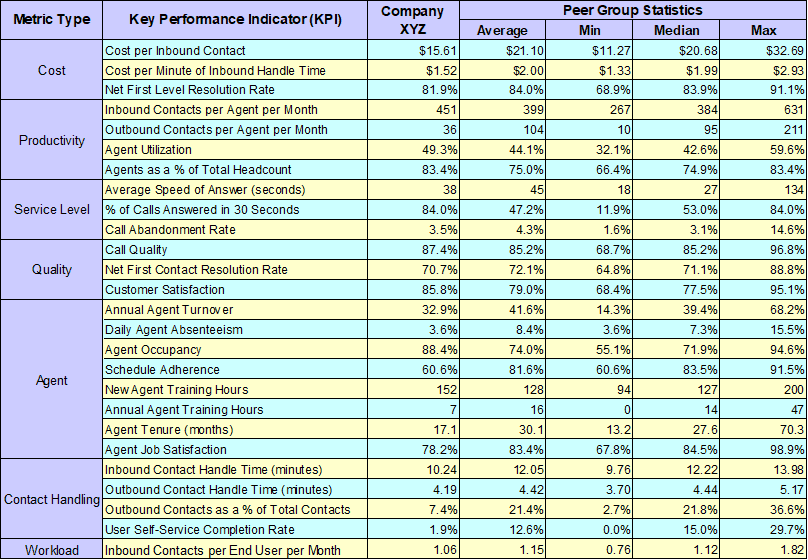
Figure 3: Performance Metrics – Net First Contact Resolution Rate
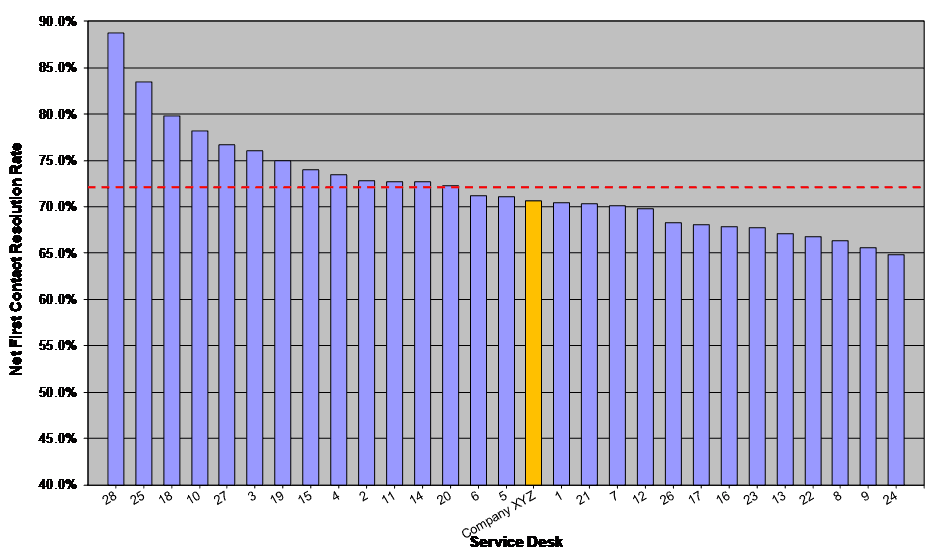
Figure 4: Cost vs. Quality for Company XYZ’s Service Desk
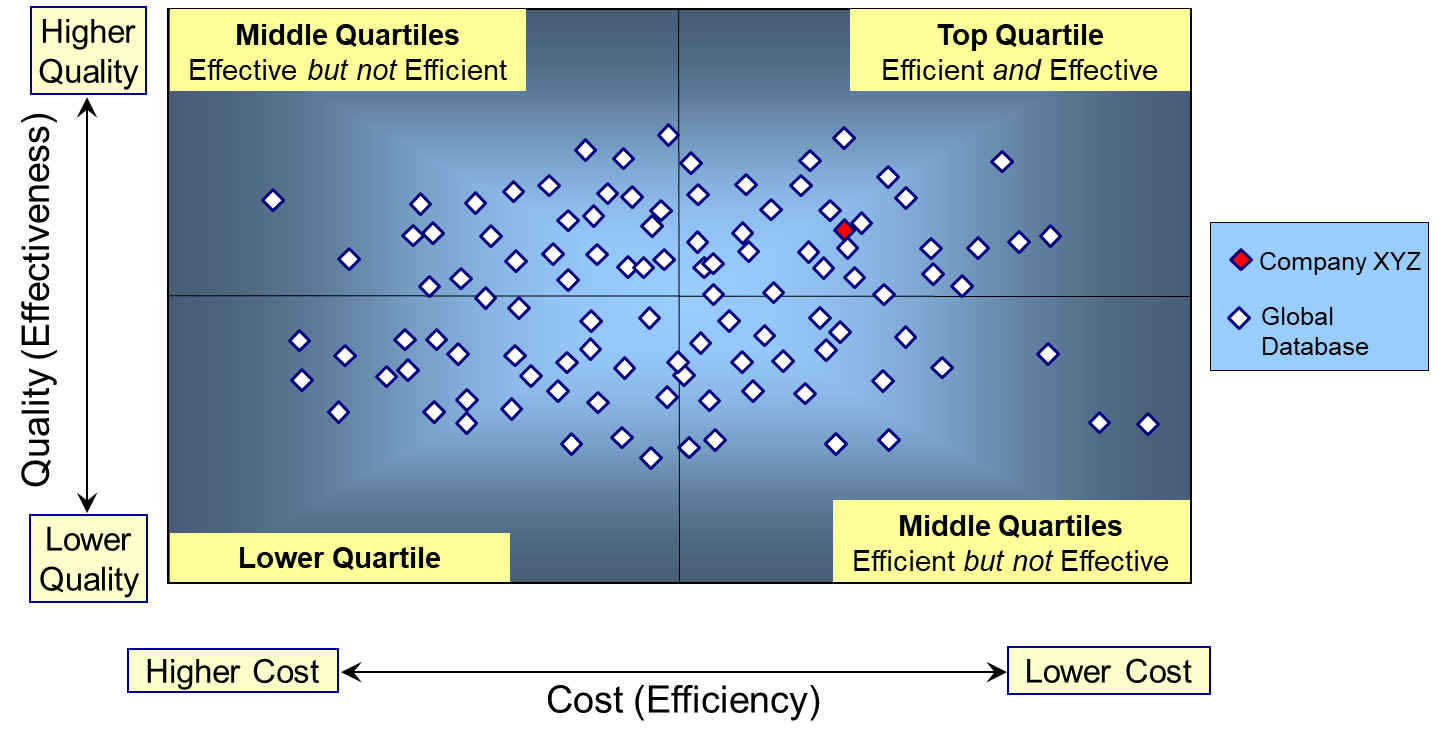
6. The Path Forward – Every action you take in the service desk must have the result of reducing or containing your cost or enhancing the quality of the customer experience. If it doesn’t do that, it isn’t worth doing. Benchmarking recommendations range from the strategic to the tactical, and will specifically identify the industry best practices that must be adopted or matured to achieve lower costs, higher customer satisfaction, and reduced ticket resolution times.
7. Track and Trend Performance – Once the path forward has been identified, it’s time to act! Your service desk has a lot of moving parts. It’s often difficult to look at a disparate set of metrics month over month or quarter over quarter and answer the question – “Are we better off this month than we were last month?” or “Are we better off this quarter than we were last quarter?”
The balanced scorecard, illustrated in Figure 5, is really an elegant solution to that dilemma. It rolls together and normalizes what we believe to be the 6 most important KPIs in the service desk.
Additionally, as illustrated in Figure 6 below, the scorecard allows you to track and trend your performance over time.
Figure 5: Service Desk Balanced Scorecard
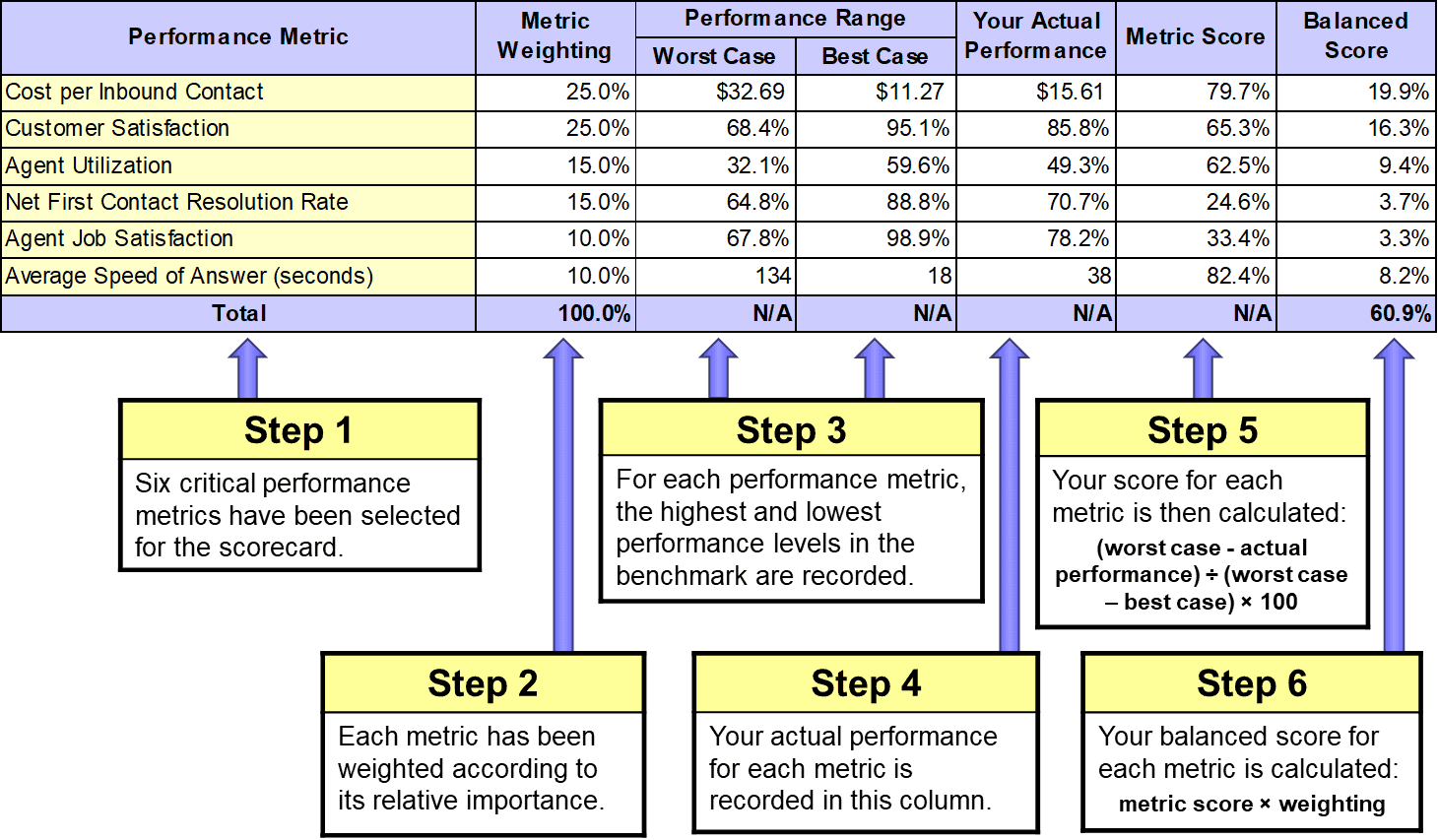
Figure 6: Service Desk Balanced Scorecard Trend
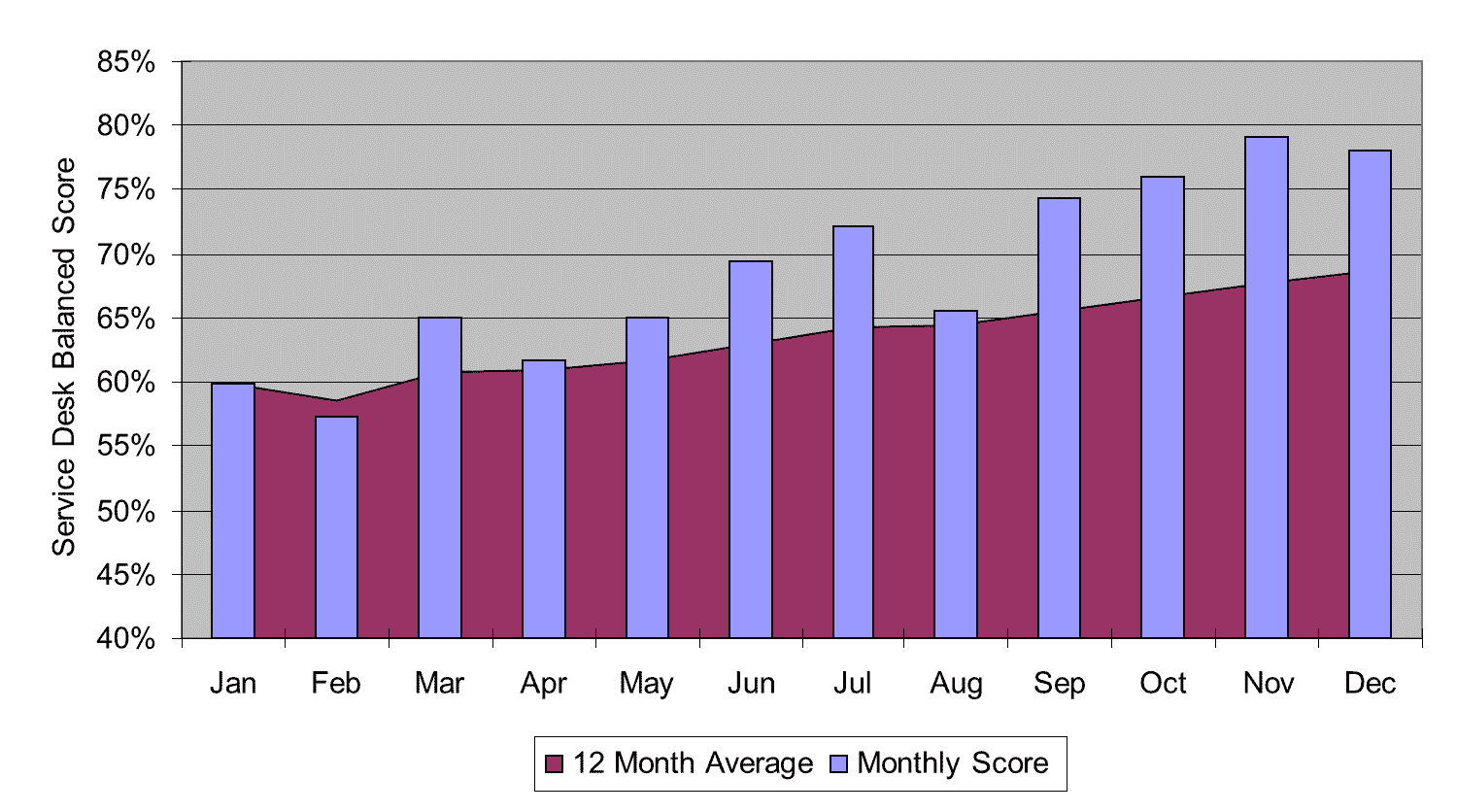
The power of benchmarking is that it enables a Service Desk to save enormous amounts of time and energy by building upon the know-how of the industry’s best-in-class performers, and adopting proven best practices. Service Desks that focus exclusively on their internal operations tend to make progress incrementally, at an evolutionary pace, through trial-and-error. But benchmarking forces an organization to look externally – at the best-in-class. By studying the best-in-class, and adopting industry best practices, Service Desks that utilize benchmarking can improve their performance at a revolutionary pace.
Industry data shows that Service Desks that conduct benchmarking are far more likely to achieve world-class performance than those who do not benchmark. In fact, there is a virtual 1:1 correspondence between Service Desks that conduct annual benchmarking, and those who achieve world-class performance. The simple fact is this: benchmarking is the most effective, proven methodology for bridging the gap to world-class performance for any organization that is committed to adopting industry best practices!
About the Author
Jeff Rumburg is Managing Partner at MetricNet, the premier provider of performance metrics, benchmarks, performance reports, and scorecards for corporations worldwide. MetricNet benchmarks encompass virtually every industry and government sector, and address all major business areas including IT, customer service, and technical support.
Benchmark your service desk with SDI and MetricNet
SDI has partnered with MetricNet to offer you a customised benchmarking service to enable you to discover exactly how your service measures up and where you should focus your improvement plans to make the most difference to your organisation.
Our Peer Group Benchmarks compare your service desk performance to a unique peer group of similar organisations and are customised to meet your needs. Your peer group will be selected from our extensive database of service desks based upon your scope, scale, complexity, and geography.
Find out how you can benchmark your service desk with SDI and MetricNet

























